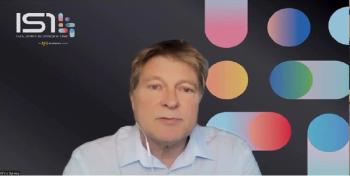
FTC Report on Follow-on Biologics Sparks Congressional Debate
The Subcommittee on Health of the US House of Representatives Energy and Commerce Committee held hearings last week to discuss the findings of a report by the Federal Trade Commission (FTC) that examined the competitive effects for follow-on-biologics (FOBs).
The Subcommittee on Health of the US House of Representatives Energy and Commerce Committee held hearings last week to discuss the findings of a
In releasing the report, FTC Chairman Jon Leibowitz set the overarching position of the FTC. “If Congress creates an efficient pathway to follow-on biologic drugs and, at least as important, ends ‘pay-for-delay’ pharmaceutical settlements that delay entry of traditional generic drugs, it will be taking a major step forward for both healthcare reform and affordable drugs for all Americans,” he said in prepared
FTC Commissioner Pamela Jones Harbour, who testified before the House subcommittee on June 11, highlighted key findings from the report:
- Legislation creating an abbreviated FDA approval process of FOBs is likely to be an efficient way to bring them to market because of the time and cost savings it would provide
- Patent protection and market-based pricing will promote competition by FOBs as well as spur biologic innovation
- A 12- to 14-year regulatory exclusivity period for pioneer biologics is too long to promote innovation by these firms, particularly since they likely will retain substantial market share after FOB entry
- Special procedures to resolve patent issues between pioneer and FOB manufacturers before FDA approval are not needed and could undermine patent incentives and harm consumers
- FOB manufacturers are unlikely to need additional incentives such as a 180-day marketing exclusivity period to develop interchangeable FOB products.
Patent exclusivity a critical area of debate
Henry A. Waxman (D-CA), chairman of the House Energy and Commerce Committee, supported the report’s finding for reducing the length of time for exclusivity. "The report completely disposes of the drug industry's argument that they need 12 to 14 years of exclusive marketing, indeed that they need any additional exclusivity, to sustain innovation,” said Waxman in a prepared
The Generic Pharmaceutical Association (GPhA) President and CEO Kathleen Jaeger also supported the report’s position regarding exclusivity. “It is important to remember that when Congress debated the Hatch-Waxman Act 25 years ago, the same arguments that we are hearing today about the need for excessive periods of exclusivity, product safety, and generic use by consumers have all been proven wrong,” she said in a prepared
The Biotechnology Industry Organization (BIO), which represents biotechnology companies in the US, refuted the FTC report. Although BIO agreed with the FTC report that biosimilar competition would resemble brand-to-brand competition among biologics in terms of the number of entrants, price competition, and market-share erosion in the short term, it pointed to what it sees as a key difference between innovator and biosimilar manufacturers. “Biosimilar manufacturers will be given a scientific and regulatory shortcut that, while more demanding than small-molecule generic-drug entry, will be considerably shorter and cheaper than the process that the initial innovator would have to go through,” said BIO in its
BIO also asserted that the comparison of exclusivity of biologics with small molecules is faulty. For small molecules, the regulatory approval standard for generics and the patent system provide protection against premature generic competition for an average of 12-14 years. “The regulatory approval standard for biosimilars creates a ‘patent protection gap’ that may allow for abbreviated regulatory approval of a biosimilar [that] does not infringe an innovator’s patent,” said BIO. The association noted that proposed measures for a biosimilar pathway would require a biosimilar to be only “similar” to the corresponding innovator product. The association contends that certain proposed legislative measures (i.e.,
White House weighs in on debate
Although not endorsing a specific legislative proposal, President Barack Obama offered his support for developing a regulatory approval pathway for FOBs. “We need to introduce generic biologic drugs into the marketplace,” he said in a
For the views of BIO’s Greenwood and GPhA’s Jaeger respective views on various proposed legislative measures for FOBs, see
For PharmTech’s blog and related comments on drug-patent exclusivity, see
Newsletter
Get the essential updates shaping the future of pharma manufacturing and compliance—subscribe today to Pharmaceutical Technology and never miss a breakthrough.





